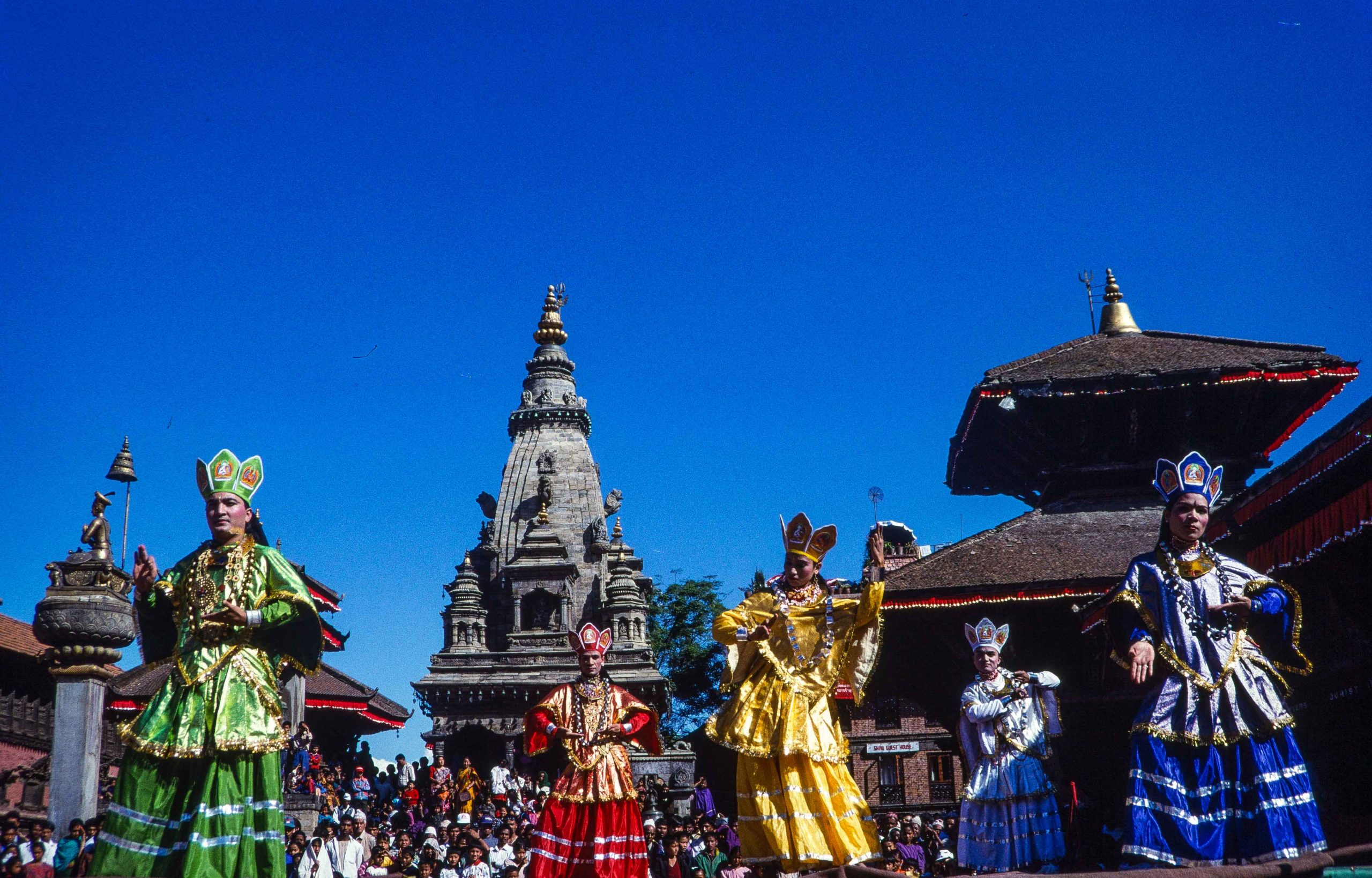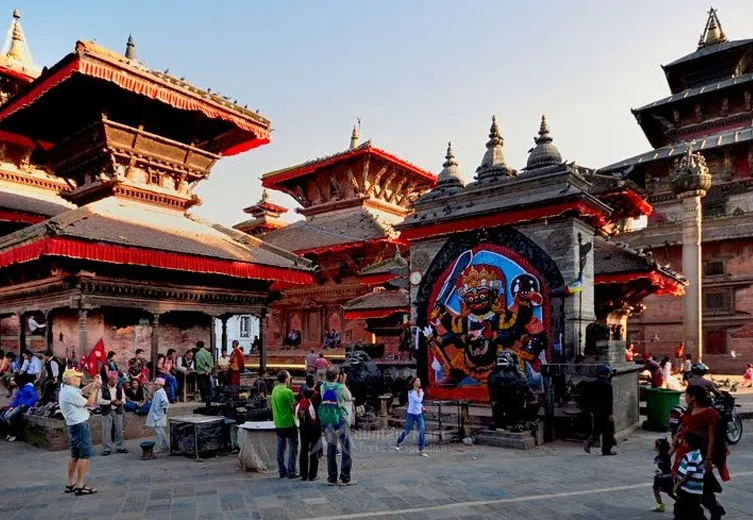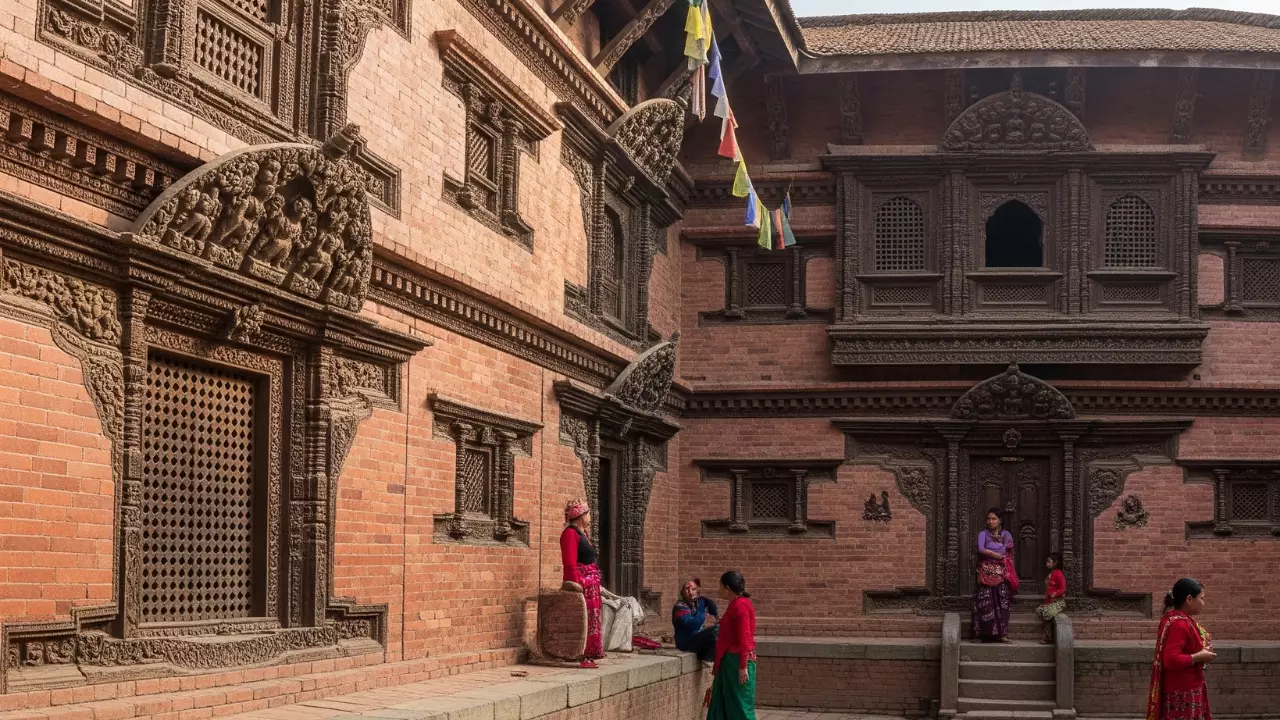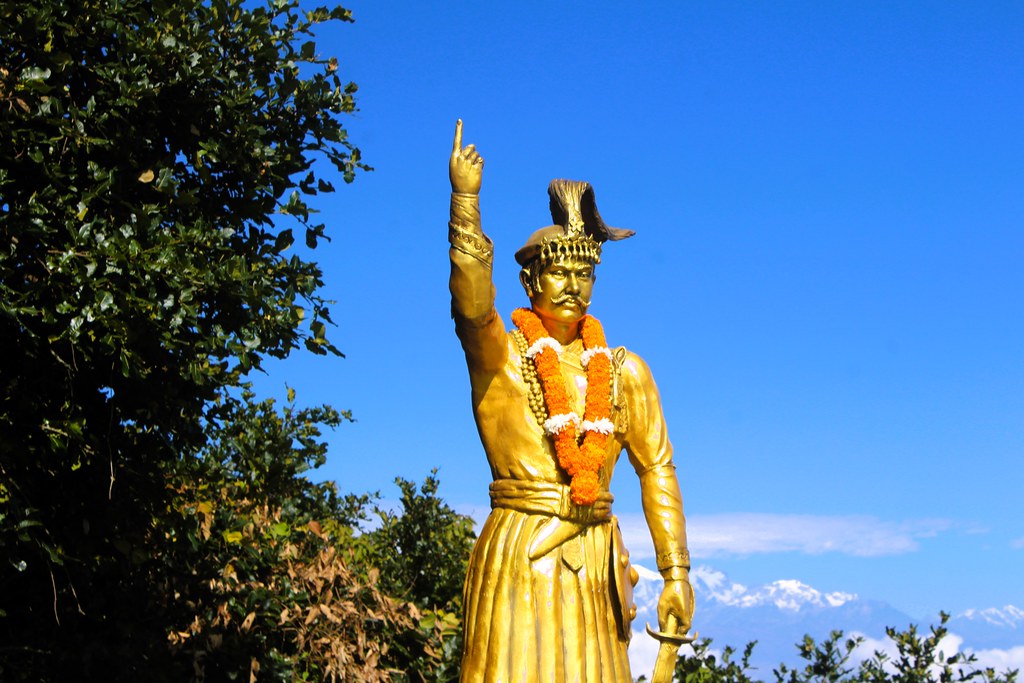Share this Article
Introduction
The Pancha Buddha dance is an ancient and revered Charya dance form dedicated to Lord Buddha rooted in Tantric Buddhism, this traditional performance is a ritualistic offering to the five transcendental Buddhas: Vairochana, Aksobhaya, Ratnasambhava, Amitabha and Amoghasiddhi. The dance performed with elaborate costumes representing natural elements is a significant aspect of Newar Buddhist heritage in the Kathmandu Valley. It is believed to transcend earthly limitations, symbolizing enlightenment and spiritual awakening.
Historical and Cultural Background
Charya dances, including the Pancha Buddha, have been an integral part of Buddhist traditions in Nepal for centuries. These dances are deeply embedded in Vajrayana Buddhism, where they serve both ritualistic and meditative functions. The Pancha Buddha dance, in particular, is performed during major Buddhist festivals and ceremonies by the Shakya community, who trace their lineage to the historical Buddha.
Historically, the Newar Buddhist priests, known as Vajracharyas have preserved and transmitted these sacred dances. The choreography and accompanying chants are derived from ancient texts that describe the metaphysical significance of each movement and gesture. The dance is considered a form of moving meditation, where each step embodies deep spiritual meaning.
Symbolism of the Pancha Buddha Dance
The dance represents the Five Dhyani Buddhas, each embodying different aspects of enlightenment:
Vairochana (The Brilliant One)
- Represents the element of ether or space.
- Embodies the wisdom of all encompassing reality.
- Associated with the color white and the dharmachakra (wheel of law) mudra.
Aksobhaya (The Unshakeable)
- Represents the element of water.
- Embodies mirror-like wisdom, reflecting all without distortion.
- Associated with the color blue and the bhumisparsha (earth-touching) mudra.
Ratnasambhava (The Matrix of the Jewel)
- Represents the element of earth.
- Embodies the wisdom of equanimity and generosity.
- Associated with the color yellow and the varada (boon-giving) mudra.
Amitabha (The Infinite Light)
- Represents the element of fire.
- Embodies the wisdom of deep awareness and compassion.
- Associated with the color red and the dhyana (meditation) mudra.
Amoghasiddhi (The Infallible Realization)
- Represents the element of air.
- Embodies all-accomplishing wisdom and fearless action.
- Associated with the color green and the abhaya (fearlessness) mudra.
Each dancer dons the distinctive colors of the five Buddhas and enacts their respective postures and mudras. The intricate hand gestures and controlled movements reflect the spiritual qualities associated with each Buddha, creating a mesmerizing visual representation of Buddhist teachings.
Performance and Ritual Aspects
The Pancha Buddha Stotra dance is merely not an artistic performance but a form of ritual worship. It is performed on significant occasions such as Buddha Jayanti, Gunla (the sacred Buddhist month), and during the consecration of stupas and monasteries.
The dance is accompanied by sacred chants and instrumental music, often featuring traditional Nepali instruments like:
- Damaru (small drum) – Represents the sound of cosmic creation.
- Ghanti (ritual bell) – Signifies wisdom and emptiness.
- Cymbals and flutes – Create a rhythmic harmony that enhances the spiritual ambiance.
Dancers undergo years of training to master the precise movements, postures, and expressions required for this dance. The choreography follows a structured pattern, beginning with invocation mudras, followed by storytelling sequences and concluding with a ritualistic offering.
The Influence of Nature in the Dance
The Pancha Buddha dance is deeply connected to nature, symbolizing the interdependence of all living beings and elements. The five Buddhas are linked to different aspects of the natural world and the colors of their costumes correspond to the five elements:
- White (Sky/Ether – Vairochana)
- Blue (Water – Aksobhaya)
- Yellow (Earth – Ratnasambhava)
- Red (Fire – Amitabha)
- Green (Air – Amoghasiddhi)
This representation reflects Buddhist cosmology, where harmony among the elements leads to enlightenment and inner peace.
Other Related Charya Dances
Apart from the Pancha Buddha Stotra, there are other significant Charya dances that hold spiritual importance:
Rakta Ganesh Dance
- Dedicated to Lord Ganesha, the elephant-headed god.
- Represents wisdom, success, and the remover of obstacles.
- Performed with red attire, symbolizing energy and power.
Arya Tara Dance
- Honors Arya Tara, the green Tara, consort of Amoghasiddhi.
- Symbolizes compassion and swift action to aid devotees.
- Dancers wear green costumes and enact graceful, flowing movements.
These dances, like the Pancha Buddha Stotra, are performed by trained practitioners who view them as a sacred duty rather than mere artistic expression.
Preservation and Challenges
Despite its spiritual and cultural significance, the Pancha Buddha dance faces challenges in the modern era with urbanization, changing lifestyles and the influence of global media, traditional art forms are slowly fading. Some of the key challenges include:
- Lack of Documentation – Many oral traditions are at risk of being lost without proper documentation.
- Limited Financial Support – Funding for training, costumes, and performances is scarce.
However, organizations and Buddhist communities are making efforts to preserve this heritage. Schools teaching Vajrayana rituals include Charya dance training and efforts are being made to document the choreography and oral traditions through digital platforms and research publications.
Conclusion
The Pancha Buddha Stotra dance is a profound representation of Nepal’s rich Buddhist heritage more than just a performance, it is a spiritual practice that conveys deep philosophical meanings as Nepal continues to evolve, preserving such traditional practices remains crucial for maintaining cultural identity and spiritual continuity.
By understanding and appreciating the symbolism and ritual significance of this dance, future generations can continue to uphold this sacred tradition, ensuring that the wisdom of the Five Buddhas remains alive in both practice and devotion.
Categories:
History & Heritage
Tags:
SpiritualChoreography
,
MantraInMovement
,
DanceOfWisdom
,
SilentSacredStories
,
InnerPathPerfomance








